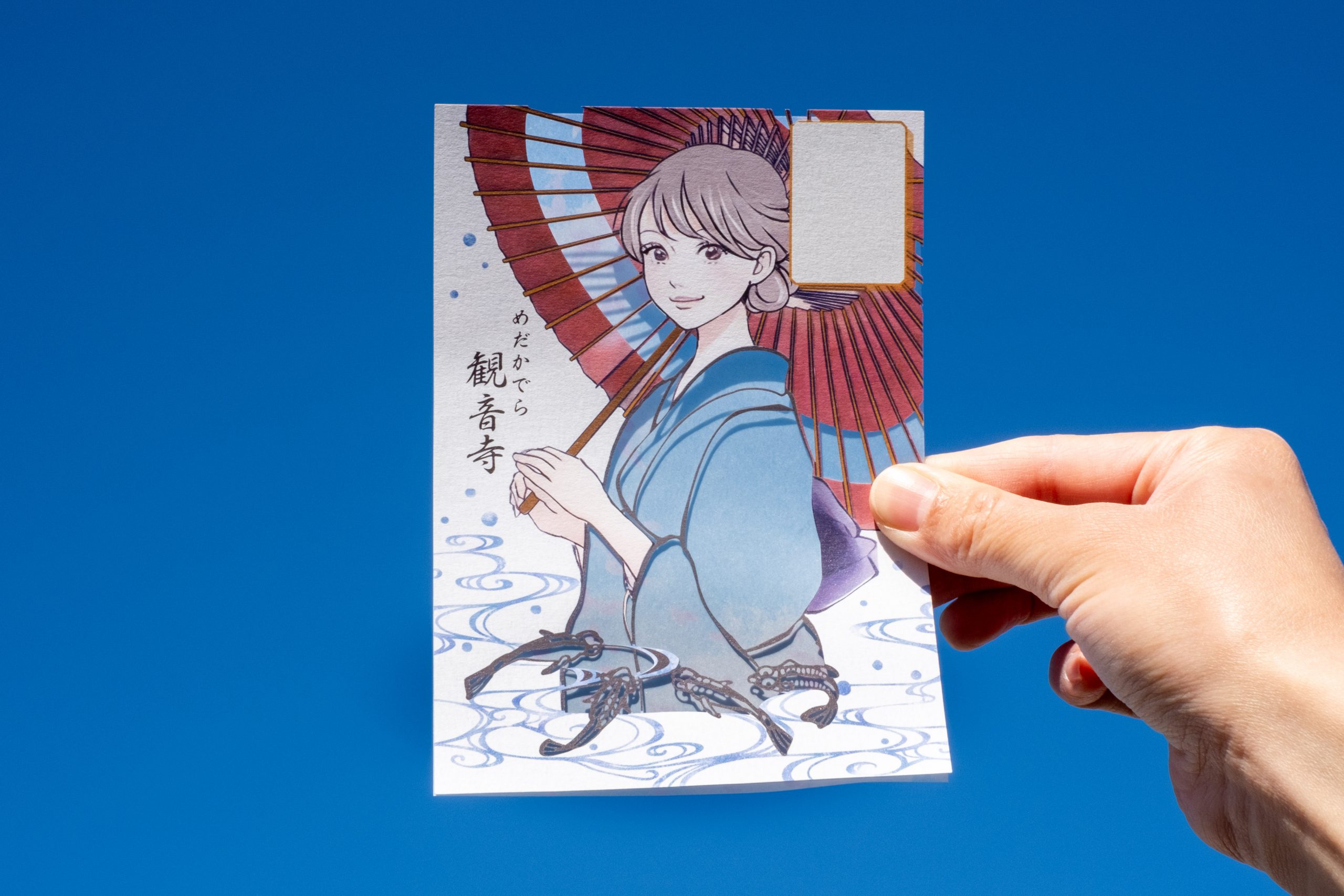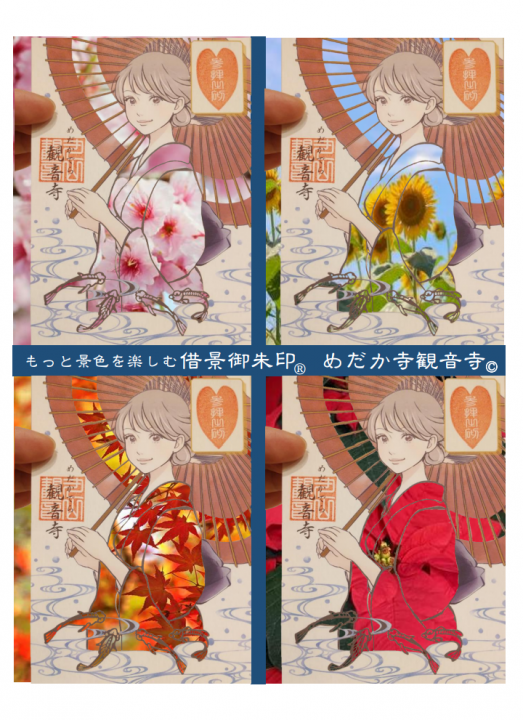
There is a temple in Nogata City, Fukuoka Prefecture, where you can see thousands of medaka fish.
Today, we would like to introduce a unique papercutting goshuin, filled with joy, created based on the imaginative ideas of the assistant head priest.
Affectionately known as the “Medaka Temple,” Maruyama Kannonji Temple is a hidden gem featured on television for its cute goshuin inspired by the medaka fish raised within its grounds.
About the ‘Medaka Temple
Maruyama Kannonji Temple, affectionately known as the “Medaka Temple,” is a Nichiren Buddhist temple located in Noogata City in the northern part of Fukuoka Prefecture.
The Onka River, flowing through the center of Noogata City, is famous in Kyushu as the only river where salmon migrate upstream. Kannonji Temple is located right by this river.
Kannonji Temple was originally known as Ennyudō of Maruyama, and it was established at its current location by Kuroda Nagamasa, who was connected to the Kuroda family, known for Kuroda Kanbei. Within the precincts, there is a statue of the Bodhisattva Kannon believed to date back to the Heian period, which is enshrined and worshipped.
The origin of the name “Medaka Temple” comes from the medaka fish that were received as a gift from parishioners over 15 years ago and have been raised since then.
What initially started with several dozen fish has now grown to over 1,000 medaka of approximately 60 different species, which can be observed in pots and tubs placed within the temple grounds from spring to autumn.
Beautiful crimson medaka, known as “Yang Guifei,” and medaka named “Miyuki,” which was exhibited at the first Medaka Contest, are among those being raised. The sight of these small medaka swimming charmingly is undoubtedly a source of comfort for visitors.
Excellent papercutting goshuin
The highlight of the goshuin that our company assisted in creating this time is the portrait of a beautiful woman depicted in the center.
In fact, the parts of the portrait depicting a traditional Japanese umbrella and kimono are cut out. This is a wonderful idea, as it cleverly transforms the scenery adorned with this goshuin into the pattern of a kimono.
How about taking photos with cherry blossoms in the background during this season? It would create a kimono pattern with cherry blossoms. For summer, morning glories; autumn, autumn leaves; and in winter, snow patterns could all be options.
Rather than simply pasting it into a goshuincho (stamp book) at that moment and calling it done, this new and delightful papercutting goshuin allows each person to capture their own unique scenery by cutting out the landscape at that particular time. It’s filled with a playful spirit. Additionally, it’s worth noting the arrangement of medaka fish, fitting for the name “Medaka Temple.

This papercutting goshuin also pays attention to the paper quality. “Arabell Snow White” is used for the main goshuin stamp, while a tracing paper with printing applied is used for the backing board.
Despite its slightly rough texture typical of paper, Arabell has excellent color reproduction and is suitable for printing. It also has good compatibility with laser processing and is relatively less prone to scorching or resin adhesion compared to other white papers.
Tracing paper is semi-transparent, resulting in a soft finish when printed. Therefore, it is often used to apply designs that accentuate the parts of the goshuin stamp that need emphasis.
Since you originally had a solid concept and a clear vision of the final product, we at our company refined the overall structure and created illustrations and designs based on that image.
Fun even if you stretch your legs a bit
Noogata City, where Kannonji Temple is located, was established as the castle town of the Nogata Domain during the Edo period.
Unfortunately, the Noogata Domain, which established Kannonji Temple, was abolished after the death of Kuroda Nagamasa. However, the town and its culture have been passed down to the present day. As a result, around Noogata Station, there are still shrines, temples, historical sites, as well as traditional crafts such as pottery and dyeing, and famous sweets like manju.
Railway-related heritage has also been preserved. Among them, the “Kamagawa Bridge” is a railway-related relic located near Kannonji Temple. The bridge, built in the Meiji era, still stands today with its brick piers.
It is a rare bridge in Japan with both up and down tracks featuring Japanese and British-made rails respectively. When visiting Kannonji Temple, it might be interesting to take a look at the Kamagawa Bridge or take a short stroll near Noogata Station.

Kannonji Temple offers a variety of medaka fish for observation, much like an aquarium. It aims to provide a bit of healing to all visitors, welcoming them with medaka as a form of hospitality. The temple’s goshuin, adorned with charming medaka illustrations by the assistant head priest, is also said to be highly popular. For those living in or visiting the Kyushu region, why not consider including the “Medaka Temple” in your itinerary for a unique experience?
The reference site
“Maruyama Kannonji Temple” Official Website
https://hukuoka-kannonji.jimdofree.com/
Instagram https://www.instagram.com/medakadera.kannonji/?hl=ja
Nogata City Tourism Portal Site https://nogata-kankoh.com/
Nogata City Virtual Museum http://nogata-virtualmuseum.jp/index.php
Kamagawa Bridge (Historical Steel Bridge Search) https://kanenohashi.com/index.php?act=detl&id=990&page=0
